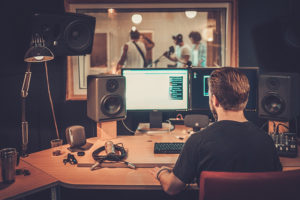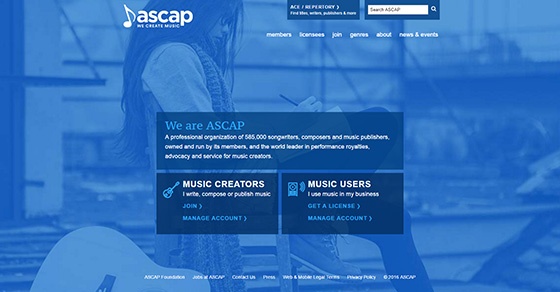I’ve Never Been in a Recording Studio Before. How Does it Work?
by T. Perry Bowers
About a third of my recording clients are first-timers. It’s a special niche my business fills. Sometimes they are teenagers in their first band; sometimes they are older folks who want to scratch something off their bucket list. Given my experience, I thought I would write something that would answer some of the questions I get when people are looking for a studio for the first time.
(Just a note: I’m going to advise as if you have a band. If you are a solo artist, you can just ignore the parts that do not pertain to you.)

Keep it simple.
PRE-PRODUCTION MEETING
Let’s assume you’ve done all your research and have found a studio that works for you and your band. A good next step is to ask the studio proprietor for a pre-production meeting. Asking over the phone or even an email or text is sufficient.
In the pre-production meeting, make sure you ask all the questions you have that are specific to that studio. For example, how do his engineers like to work? Do they need breaks or do they just power through the whole day?
It’s also important to understand how the studio likes to flow. Do they recommend playing each part separately or do they usually have the band play live? If the studio recommends playing each part separately (which is what I would recommend for first timers), where do they start? From my experience, starting with the rhythm guitar and drums is the most successful, but maybe they prefer to start with drums and piano.
In the end, figuring out what works best for your band is most important. Making these decisions before you enter the studio ensures that no time is wasted when you’re on the clock.
IN THE STUDIO
You can look up my article WHY YOU NEED TO BE SOLID WITH A CLICK TRACK, if you want to learn more about a click track, but suffice it to say, you will need to be comfortable with a metronome. If you’re not, you’re not ready for the studio.
Let’s say you recorded a rhythm guitar and the drums. (You may want a *scratch vocal in there as well, mostly to guide the parts. You’d be amazed at how much you rely on the vocal to know where you are in the song). Now you want to start the overdub process.
Overdubbing is when you layer your recording. Overdubbing involves listening to the drums and rhythm guitar to lay down the bass. This is a great process because everyone in the band can focus on the bass part. It may seem a little intimidating for the bass player since everyone is focused on you, but remember, the studio is magic. There are lots of techniques we can use to make you sound like a master bass player, even if you’re not.
What can we do? We can take a part note if we need to. If you can only get through the verse without making a mistake or if you can only get one progression of the bridge at a time, that’s fine. We’ll just take it section by section and edit the pieces together. Almost all instruments can be “punched in and out.” A punch in is simply where you punch a key to start and stop recording. Drums are a little tricky punch in and out, especially because of a lingering cymbal ring. Still, I’ve never been in a situation where we couldn’t find a spot to punch in drums.
Nowadays, digital technology has made this process is extremely precise. Knowing your parts can speed up this process, but good engineers should be able to get the best recording possible
We can also do pitch correction. This shouldn’t be necessary on guitars, pianos, or drums because we can tune those instruments. As long as you hit the right note, it should be in tune. But vocals are a different story. You’ll have to make a call about how much pitch correction you want to use. Some bands want the vocal to be as authentic as possible. Others want the recording to be pitch perfect.
Just work with your engineer about what you want. Usually we will track the vocals first and do the pitch correction later. When you are tracking your vocals, make sure to talk with an engineer and get their advice. Most of the time, the engineer can understand your limitations and strengths.
Maybe you have a person in the band that you trust to help you get a good vocal take. If you need to, take your vocals line by line or even word by word. Being in the vocal booth is a great opportunity to direct your singing. You will probably improve your ability to sing the songs live by recording them.
After all the tracking is done, you will move to the mixing process.
Mixing is where you take all the recorded tracks and “mix” them together. The engineer will often start with the drums, then bass, then guitar and piano, then vocals, etc. I’ve see some engineers start with guitars and move backwards too. Whatever works.
When you are recording an album, you might want to bring an example or two of music that you would like your album to sound like. It is helpful for an engineer to have a reference. Some folks like bright sounding albums. Some like dark and moody. If you give the engineer an idea before he starts mixing, he won’t end up going down the wrong path.
Engineers have their own taste and style, but ultimately they want to please the client.
Engineers will equalize (EQ) the tracks, meaning they manipulate the frequencies. Sometimes an instrument will have a twang or a tone that could be reduced by “cutting” a certain frequency. Sometimes you want to go the other way and boost a tone that may be too quiet.
Compression, limiters and gates are other tools to even out a track’s sound and eliminate unwanted noise between notes.
Effects such as reverb and delays will make the songs sound bigger and more alive. The engineer will know just how much to use without making it sound washy.
Sometimes mixes happen when the whole band is in the room, sometimes the engineer will mix the songs on his own and email you the tracks to listen to on your own systems (iPod, car stereo, home stereo, etc.). After a few passes back and forth, the engineer will make final adjustments until you call the mixes done.
Finally, if you have a group of songs, the engineer will “master” the songs. This is where the engineer makes all the songs sound similar so that the end listener doesn’t have to adjust the volume or EQ settings while listening to the album.
The songs will then be delivered in a final format, usually a CD, thumb drive, or some sort of cloud delivery system. The songs are then ready to distribute in the form you choose.
Not every artist reaches a point where they want to take their sound from the basement to the real world, but for the ones who do, a professional recording studio can be an important part of that step. Hopefully, this blog will take away some of the mystery and trepidation from the process.
*A scratch take is something you record as a guide that will be “scratched” (recorded over) later.

